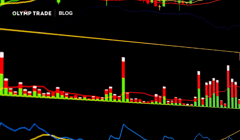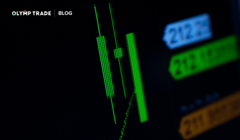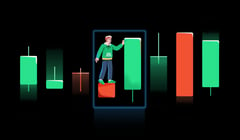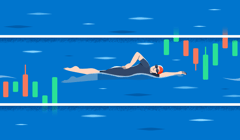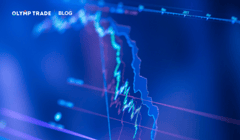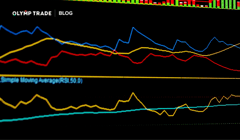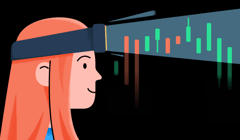
The Wyckoff trading method includes the accumulation and distribution phase of the market from which taking trades using price action is easy. Moreover, this method precisely defines what more prominent players are doing with the price so that retailers can follow in their footsteps.
The Wyckoff method was created by Richard Wyckoff, who spent most of his life teaching. As he was an American stock market investor, and the founder of “Wall Street Magazine”, his teaching had a huge impact on modern technical analysis. The Wyckoff trading strategy has become a well-established method for finding the price direction on forex, stocks, cryptocurrencies, and indices.
According to the Wyckoff trading method, larger players or institutional investors move the price with larger orders, and smart traders should follow their direction. If you are interested in building a trading strategy with Wyckoff or want to include this concept in your trading method, the following section is for you.
Contents:
- Three Wyckoff Laws
- Wyckoff Price Cycle
- Wyckoff Accumulation Stage
- Wyckoff Distribution Stage
- Price Action Trading Approach In Wyckoff Method
- Final Thoughts
Interact with the underlined words and green dots to get additional details and explanations.
Additional context for the visuals.
Explanations and definitions of terms.
Three Wyckoff Laws
In the Wyckoff forex method, the basic idea is to have explicit knowledge of the Wyckoff law and price cycle that we will see in this section.
- Supply and Demand
- Cause and Effect
- Law of Effort
1️⃣ The Law of Supply and Demand
Supply and demand is the first core law of the Wyckoff method, which says the price of a trading instrument will change due to the change in supply and demand.
Let’s see the supply and demand equation:
- Demand exceeds supply means the price will increase.
- Supply exceeds demand means the price will decrease.
- Demand and supply are the same means there will be no change in the price.
However, it is often hard for traders to find the same supply and demand zone. Traders often use the order block candlestick, volume, and price action to find reliable supply and demand zones.
2️⃣ The Law of Cause and Effect
The cause and effect law says the price trend has two phases: accumulation and distribution.
The accumulation phase comes after solid economic events from where bulls prepare to take the price up. Conversely, the distribution phase indicates sellers' presence in the market in a downtrend.
3️⃣ The Law of Effort vs Result
The third Wyckoff law says that the price of a trading instrument changes with the volume change.
A reliable price direction comes when the price action and volume show the same direction. On the other hand, if the price action and volume move in the opposite direction, it might indicate a trend reversal.
Wyckoff Price Cycle
According to the Wyckoff trading strategy, traders project the price direction of an instrument from supply and demand analysis, volume, and price action data.
The Wyckoff price cycle defines the accumulation and distribution in the price chart. Any buy trade from the markup zone has a higher success rate. Conversely, the markdown level comes from the end of the distribution phase, where taking sell trades have higher success rates.

Wyckoff Accumulation Stage
In this section, we will see what happens within the Wyckoff accumulation phase.
First, the price remains within a range-bound momentum after solid selling pressure. This phase indicates larger players' order building and the elimination of retail traders who hope for further sells.
According to the Wyckoff trading strategy, there are six stages of market accumulation, as shown in the image below:

Preliminary Support
It comes after a strong bearish trend, where investors may experience higher volume and wider spread. It indicates that the selling pressure is ending with excessive volatility.
Selling Climax
In this stage, the price will move down by creating a panic sell. After that, the price will move up within exhaustion. Investors can spot it by finding a long spike candle to increase the probability.
The Automatic Rally
After the price recovery in the selling climax, the price indicates that short-term sellers are covering their positions. As a result, the price may trade with a range that may work as a barrier to buyers.
Secondary Test (ST)
After the correction, the price will decrease again, and the selling volume will be more substantial.
The Spring
It is the final selling pressure before increasing the price. As a result, retail traders might consider it a strong trend continuation. After that, the price may rebound with a swing failure pattern.
Accumulation Schematic
It is the final step of the Wyckoff, where the price should break out from the range with solid buying pressure and confirm a bullish trend.
Preliminary Support (PS)
It comes after a strong bearish trend, where investors may experience higher volume and wider spread. It indicates that the selling pressure is ending with excessive volatility.
Selling Climax (SC)
In this stage, the price will move down by creating a panic sell. After that, the price will move up within exhaustion. Investors can spot it by finding a long spike candle to increase the probability.
The Automatic Rally (AR)
After the price recovery in the selling climax, the price indicates that short-term sellers are covering their positions. As a result, the price may trade with a range that may work as a barrier to buyers.
Secondary Test (ST)
After the correction, the price will decrease again, and the selling volume will be more substantial.
The Spring
It is the final selling pressure before increasing the price. As a result, retail traders might consider it a strong trend continuation. After that, the price may rebound with a swing failure pattern.
Accumulation Schematic (AS)
It is the final step of the Wyckoff, where the price should break out from the range with solid buying pressure and confirm a bullish trend.
Wyckoff Distribution Stage
It is the opposite version of the Wyckoff accumulation where the trend reversal from bullish to bearish happens. There are four steps in the distribution stage, as shown in the image below:

Preliminary Supply
It comes after a strong bullish momentum where buying volume is strong, and spread is wide.
Consolidation Zone
In this stage, the price trades within a range where normal volume and spread are available.
Last Point of Supply
After the range, the price will move higher again with a higher volume. Therefore, retailers might consider it a trend continuation, but the price will reverse immediately after making a new high.
Distribution Marks
In this step, the price will form a bearish breakout from the range, indicating a new bearish trend.
Preliminary Supply (PS)
It comes after a strong bullish momentum where buying volume is strong, and spread is wide.
Consolidation Zone (CZ)
In this stage, the price trades within a range where normal volume and spread are available.
Last Point of Supply (LPSY)
After the range, the price will move higher again with a higher volume. Therefore, retailers might consider it a trend continuation, but the price will reverse immediately after making a new high.
Distribution Marks (D)
In this step, the price will form a bearish breakout from the range, indicating a new bearish trend.
Price Action Trading Approach In Wyckoff Method
Price action is a process of reading the price of an instrument and taking trades accordingly. When the market direction is set from the Wyckoff trading method, we can use price action to open buy/sell positions.
Aggressive Entry
First, investors should read the market carefully and find three Wyckoff accumulation points. Once the spring phase is over, the price may extend the bullish trend in the long run. Now traders should move to the price action to find the potential entry-level.

Conservative Entry
The conservative approach is to wait for the confirmation of the trend change and by finding a stable price above the spring level. Although our main aim is to find the price within a strong bullish trend, a minor bearish correction may appear. Instead of buying from the spring, conservative traders can wait for a bearish correction and open trades from the near-term support level.

Final Thoughts
The Wyckoff trading method came into the world 100 years ago but still endures in the market as a profitable trading strategy. Moreover, traders can combine this theory with price action to generate profitable trading signals.
Price action is an important tool for financial market analysis that allows traders to read the market like a book 📚
Besides price action, traders can combine the Wyckoff method with other technical analysis tools like MA, MACD, RSI, etc. Go through the Olymp Trade Blog, where the detailed use of popular technical analysis tools is available.
Try it on DemoRisk warning: The contents of this article do not constitute investment advice, and you bear sole responsibility for your trading activity and/or trading results.


